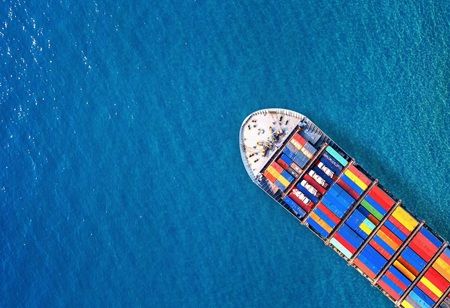
The Vizhinjam International Seaport, an all-season port which promises to be the fulcrum for India's maritime transshipment, will write a new page in the pages of Indian maritime trade on Friday (May 2, 2025) when Prime Minister Narendra Modi commissions the ambitious port project in honour of the country by 11 a.m. Based on innovative technology, the Vizhinjam Port shall be a paradigm shifter for South Asia's maritime trade.
The nation's first semi-automated port that's located in Vizhinjam seaport positions itself as one of the world's most advanced transshipment ports that decreases vessel turnaround times while improving India's ability to handle large container vessels. Equipped with an AI-powered control room and Vessel Traffic Management System (VTMS) created by IIT-M and Maritime Technology Pvt Ltd., the first Indigenous ship management system deployed at an Indian port, the port was able to monitor ships coming into the port through radar and sensors, giving real-time movement and location details to ships nearby and maximizing port traffic flow and berthing allocation.
The port is also anticipated to end the country's reliance on other global ports. Approximately 75% of the transshipment cargo of the country is being processed at global ports, leading to the loss of up to $200-220 million in potential revenues annually, making the Indian industries prone to a rise in cost, possible inefficiencies and congestion, and posing long-term threats to India's trade competitiveness.
The weatherproof port has overcome many obstacles along the way. The biggest among these obstacles, including the intense protest lodged over the construction of the breakwater by fishermen with a strong church group behind them, was the largest problem facing the Kerala government, even though where the port will be is at least in many ways a well-suited position for an internationally sized seaport because the area possesses a natural depth, as well as no movement on the littoral.
Though, the rubble-mounded breakwater built, standing firm against the hurdles raised by a section, is an engineering feat in the nation. A breakwater as long as 2,960 meters has been built in the sea at the depth of 18 to 20 meters and the total height of 28 meters, that is equal to a 9-storeyed building, it being the deepest breakwater in the nation that has ever been built.
Now the port, 10 nautical miles from the international shipping lanes linking Europe, the Persian Gulf and the Far East, the east-west shipping axis, can accommodate new generation ships of capacity of about 18,000 TEU since the location is blessed with a natural water depth of 18 to 20 meters at a kilometre from the shore, in a position to receive very large mother ships.
The Ministry of Environment and Forests has previously given environmental clearances for phases II and III of the port's development, which will induce an investment worth ₹9,560 crore from Adani Port under the terms of the concession agreement, thus increasing the present capacity of the port from 1 million TEUs/annum to 3 million TEUs/annum by the year 2028.

